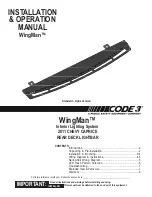
Notes on regularly inspecting wheels
and tires
G
WARNING
Regularly check the tires for damage.
Damaged tires can cause tire inflation
pressure loss. As a result, you could lose
control of your vehicle.
Worn, old tires can cause accidents. If the tire
tread is worn to minimum tread depth, or if
the tires have sustained damage, replace
them.
R
Regularly check the wheels and tires of
your vehicle for damage (e.g. cuts,
punctures, tears, bulges on tires and
deformation or cracks or severe corrosion
on wheels) at least once a month, as well
as after driving off-road or on rough roads.
Damaged wheels can cause a loss of tire
pressure.
R
Regularly check the tire tread depth and
the condition of the tread across the whole
width of the tire (
Y
page 295). If necessary,
turn the front wheels to full lock in order to
inspect the inner side of the tire surface.
R
All wheels must have a valve cap to protect
the valve against dirt and moisture. Do not
mount anything onto the valve (such as tire
pressure monitoring systems) other than
the standard valve cap or other valve caps
approved by Mercedes-Benz for your
vehicle.
R
Regularly check the pressure of all the tires
including the emergency spare wheel or the
spare wheel, particularly prior to long trips,
and correct the pressure as necessary
(
Y
page 297).
Tire tread
G
WARNING
Although the applicable federal motor vehicle
safety laws consider a tire to be worn when
the tread wear indicators (TWI) become
visible at approximately
1
/
16
in (1.6 mm), we
recommend that you do not allow your tires
to wear down to that level. As tread depth
approaches
1
/
8
in (3 mm), the adhesion
properties on a wet road are sharply reduced.
Depending upon the weather and/or road
surface (conditions), the tire traction varies
widely.
Do not use tires that are excessively worn as
the tire traction on wet road surfaces
decreases significantly when the tread depth
is less than
1
/
8
inch (3 mm).
Tread wear indicators (TWI) are required by
law. Six indicators are positioned on the tire
tread. They become visible as soon as a tread
depth of approximately
1
/
16
inch (1.6 mm)
has been reached. If this is the case, the tire
is so worn that it must be replaced.
The recommended tread depth for summer
tires is at least
1
/
8
inch (3 mm). The
recommended tread depth for winter tires is
at least
1
/
6
inch (4 mm).
Bar marking
:
for tread wear is integrated
into the tire tread.
Notes on selecting, mounting and
replacing tires
R
Only mount tires and wheels of the same
type and make.
R
Only mount tires of the correct size onto
the wheels.
R
After mounting new tires, run them in at
moderate speeds for the first 60 miles
Operation
295
Wheels and tires
Z
Summary of Contents for C 250 Coupe
Page 1: ...C Class Coupe Operator s Manual ...
Page 4: ......
Page 28: ...26 ...
Page 68: ...66 ...
Page 182: ...180 ...
Page 242: ...240 ...
Page 264: ...262 ...
Page 278: ...276 ...
Page 336: ...Order no 6515 0744 13 Part no 204 584 50 82 Edition A 2012 É2045845082lËÍ 2045845082 ...
















































